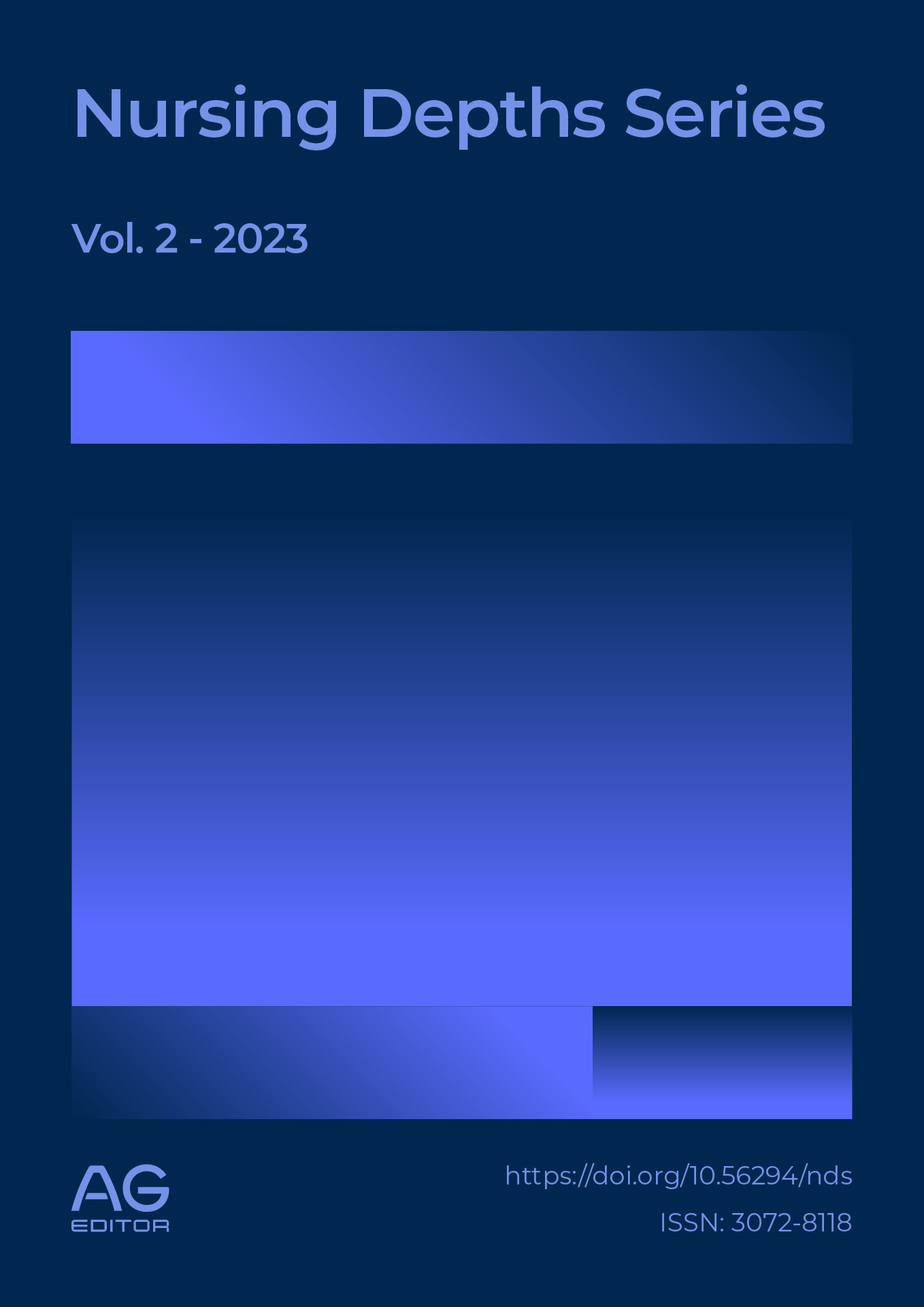Stress level in nursing professionals working at a hospital center in Callao
DOI:
https://doi.org/10.56294/nds202363Keywords:
Psychological stress, Nursing, Mental healthAbstract
Stress in nurses is one of the most common problems today that hinders the provision of quality care. Therefore, the objective of this research is to determine the level of stress in nursing professionals working in a hospital in Callao. This is a quantitative, descriptive, and cross-sectional study, with a total population of 200 nurses who answered a sociodemographic questionnaire and the Nursing Stress Scale. The results showed that 91 (n=45.5%) had low stress, 88 (n=44%) had medium stress, and 21 (n=10.5%) had high stress. In conclusion, strategies should be sought to develop coping tools to combat stress within the workday.
References
[1] J. Alkhawaldeh, K. Soh, F. Mukhtar, and C. Ooi, “Effectiveness of stress management interventional programme on occupational stress for nurses: A systematic review,” J. Nurs. Manag., vol. 28, no. 2, pp. 209–220, 2020, doi: 10.1111/jonm.12938. DOI: https://doi.org/10.1111/jonm.12938
[2] T. Cheung, T. Fong, and D. Bressington, “COVID-19 under the SARS Cloud: Mental Health Nursing during the Pandemic in Hong Kong,” J. Psychiatr. Ment. Health Nurs., vol. 28, no. 2, pp. 115–117, 2021, doi: 10.1111/jpm.12639. DOI: https://doi.org/10.1111/jpm.12639
[3] H. Ali, A. Cole, A. Ahmed, S. Hamasha, and G. Panos, “Major stressors and coping strategies of frontline nursing staff during the outbreak of coronavirus disease 2020 (Covid-19) in alabama,” J. Multidiscip. Healthc., vol. 13, pp. 2057–2068, 2020, doi: 10.2147/JMDH.S285933. DOI: https://doi.org/10.2147/JMDH.S285933
[4] J. Arnetz, C. Goetz, B. Arnetz, and E. Arble, “Nurse reports of stressful situations during the COVID-19 pandemic: Qualitative analysis of survey responses,” Int. J. Environ. Res. Public Health, vol. 17, no. 21, pp. 1–12, 2020, doi: 10.3390/ijerph17218126. DOI: https://doi.org/10.3390/ijerph17218126
[5] T. Schnell and H. Krampe, “Meaning in Life and Self-Control Buffer Stress in Times of COVID-19: Moderating and Mediating Effects With Regard to Mental Distress,” Front. Psychiatry, vol. 11, no. 1, pp. 1–16, 2020, doi: 10.3389/fpsyt.2020.582352. DOI: https://doi.org/10.3389/fpsyt.2020.582352
[6] E. Lee and J. Kim, “Nursing stress factors affecting turnover intention among hospital nurses,” Int. J. Nurs. Pract., vol. 26, no. 6, pp. 1–7, 2020, doi: 10.1111/ijn.12819. DOI: https://doi.org/10.1111/ijn.12819
[7] N. Salari et al., “The prevalence of stress, anxiety and depression within front-line healthcare workers caring for COVID-19 patients: a systematic review and meta-regression,” Hum. Resour. Health, vol. 18, no. 1, pp. 1–14, 2020, doi: 10.1186/s12960-020-00544-1. DOI: https://doi.org/10.1186/s12960-020-00544-1
[8] S. Rabei, G. Mourad, and A. Hamed, “Work stress and sleep disturbances among internship nursing students,” Middle East Curr. Psychiatry, vol. 27, no. 1, pp. 1–6, 2020, doi: 10.1186/s43045-020-00032-1. DOI: https://doi.org/10.1186/s43045-020-00032-1
[9] A. Stelnicki, R. Carleton, and C. Reichert, “Nurses’ Mental Health and Well-Being: COVID-19 Impacts,” Can. J. Nurs. Res., vol. 52, no. 3, pp. 237–239, 2020, doi: 10.1177/0844562120931623. DOI: https://doi.org/10.1177/0844562120931623
[10] M. Okuhara, K. Sato, and Y. Kodama, “The nurses’ occupational stress components and outcomes, findings from an integrative review,” Nurs. Open, vol. 8, no. 5, pp. 2153–2174, 2021, doi: 10.1002/nop2.780. DOI: https://doi.org/10.1002/nop2.780
[11] D. Sanliturk, “Perceived and sources of occupational stress in intensive care nurses during the covid-19 pandemic,” Intensive Crit. Care Nurs., vol. 1, no. 1, p. 103107, 2021, doi: 10.1016/j.iccn.2021.103107. DOI: https://doi.org/10.1016/j.iccn.2021.103107
[12] E. Kakemam et al., “Occupational stress and associated risk factors among nurses: a cross-sectional study,” Contemp. Nurse, vol. 55, no. 2–3, pp. 237–249, 2019, doi: 10.1080/10376178.2019.1647791. DOI: https://doi.org/10.1080/10376178.2019.1647791
[13] M. Murat, S. Köse, and S. Savaşer, “Determination of stress, depression and burnout levels of front-line nurses during the COVID-19 pandemic,” Int. J. Ment. Health Nurs., vol. 30, no. 2, pp. 533–543, 2021, doi: 10.1111/inm.12818. DOI: https://doi.org/10.1111/inm.12818
[14] R. Said and D. El-Shafei, “Occupational stress, job satisfaction, and intent to leave: nurses working on front lines during COVID-19 pandemic in Zagazig City, Egypt,” Environ. Sci. Pollut. Res., vol. 28, no. 7, pp. 8791–8801, 2021, doi: 10.1007/s11356-020-11235-8. DOI: https://doi.org/10.1007/s11356-020-11235-8
[15] A. Hendy, A. Abozeid, G. Sallam, H. Abboud, and F. Ahmed, “Predictive factors affecting stress among nurses providing care at COVID-19 isolation hospitals at Egypt,” Nurs. Open, vol. 8, no. 1, pp. 498–505, 2021, doi: 10.1002/nop2.652. DOI: https://doi.org/10.1002/nop2.652
[16] P. Harsahni and A. Mahendra, “Prevalence of Work Stress among Nurses in a Major Tertiary Care Hospital, Colombo, Sri Lanka,” Asian J. Appl. Sci. Technol., vol. 5, no. 2, pp. 109–116, 2021, doi: 10.38177/ajast.2021.5215. DOI: https://doi.org/10.38177/ajast.2021.5215
[17] Y. Aldazabal, “Estrés durante la Pandemia en Enfermeros que laboran primera línea en un Hospital COVID-19 en Lima,” Rev. Investig. Agora, vol. 7, no. 2, pp. 107–113, 2020, [Online]. Available: https://www.revistaagora.com/index.php/cieUMA/article/view/125/112.
[18] C. Fernández and P. Baptista, “Metodología de la Investigación.” p. 634, 2015, [Online]. Available: http://observatorio.epacartagena.gov.co/wp-content/uploads/2017/08/metodologia-de-la-investigacion-sexta-edicion.compressed.pdf.
[19] P. Gray and A. James, “The Nursing Stress Scale: Development of an instrument,” J. Behav. Assess., vol. 3, no. 1, pp. 11–23, 20151, [Online]. Available: https://link.springer.com/article/10.1007/BF01321348#:~:text=It consists of 34 items,nurses in the hospital environment. DOI: https://doi.org/10.1007/BF01321348
[20] R. Más and V. Escribá, “La Versión Castellana de la Escala ‘The Nursing Stress Scale’. Proceso de Adaptación Transcultural,” Rev Esp Salud Pública, vol. 72, no. 1, pp. 529–538, 1998, [Online]. Available: https://scielo.isciii.es/pdf/resp/v72n6/castellana.pdf. DOI: https://doi.org/10.1590/S1135-57271998000600006
Published
Issue
Section
License
Copyright (c) 2023 Milusca Jaqueline Velarde-Tejada, David Fidel Vela-Quico, Fernando Ubaldo Enciso-Miranda, Isaura Oberson Santander, Adalid Rimer Condo-Gutierrez (Author)

This work is licensed under a Creative Commons Attribution 4.0 International License.
The article is distributed under the Creative Commons Attribution 4.0 License. Unless otherwise stated, associated published material is distributed under the same licence.






